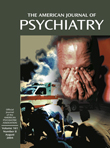To the Editor: I read with interest the article by Paul E. Keck, Jr., M.D., and colleagues
(1) that reported that treatment of bipolar patients with ziprasidone was efficacious and relatively safe. However, I was concerned about the use of a significant amount of benzodiazepines in this study. The authors reported that overall, the use of benzodiazepines was similar between patients treated with ziprasidone and those treated with placebo. However, if ziprasidone was robustly effective for acute mania or acute instability of mood, one would have expected that it would be associated with a decreased need for use of benzodiazepines.
A more specific concern was that long-acting benzodiazepines were used to treat insomnia in a substantial percentage of patients in both study groups. At study endpoint, the authors reported that for patients treated with ziprasidone, 20 were treated with temazepam, and three were treated with diazepam. In comparison, for patients treated with placebo, seven were treated with temazepam, and one was treated with diazepam. Therefore, at study endpoint, of the 75 ziprasidone-treated patients, 23 (31%) were treated with a long-acting benzodiazepine, and of the 31 placebo-treated patients, eight (26%) were treated with a long-acting benzodiazepine.
Thus, it is of concern that a substantial percentage of ziprasidone-treated patients required benzodiazepines for the treatment of insomnia and that this percentage was not significantly lower than that for placebo-treated patients. Furthermore, the steady-state half-lives of these benzodiazepines and their metabolites are considerable: 14 hours for temazepam and 42 hours for diazepam
(2). Using the general guideline that it takes about four half-lives for a drug to clear the body, these patients would have had clinically significant blood levels of these drugs during the day after evening administration. These levels could have affected several measures of efficacy and side effects. For example, they could have improved efficacy by reducing symptoms of mania or mood instability. And they could have caused side effects, for example, daytime sedation, which was a significant problem in the ziprasidone-treated group. Also, they could have reduced other potential side effects, including akathisia, acute dystonia, or parkinsonism. For these reasons, other studies will avoid sedative-hypnotics at bedtime or perhaps use a much shorter-acting agent, such as chloral hydrate.
Finally, the authors reported that the use of anticholinergic medication to treat parkinsonism or propranolol to treat akathisia was recorded, but they did not report the results. Was there significantly greater use of these medications in the ziprasidone-treated patients? If so, it would indicate that acute-onset movement disorders were a clinically significant effect of ziprasidone in contrast to the authors’ conclusion to the contrary.

